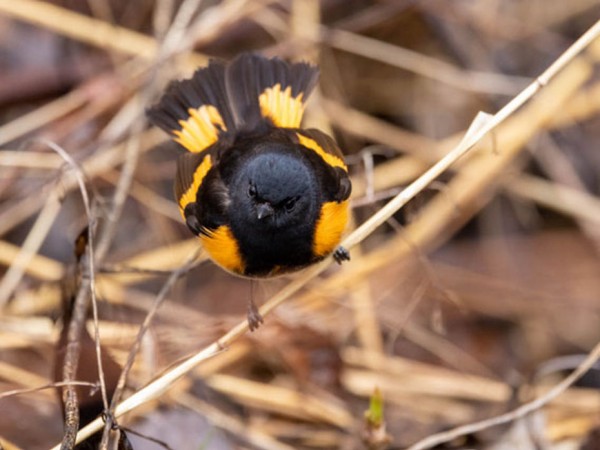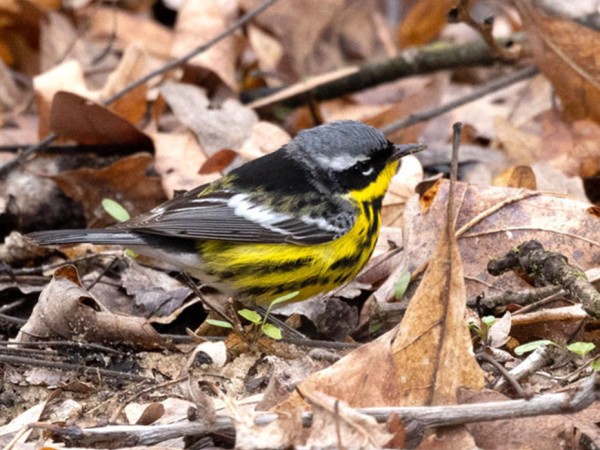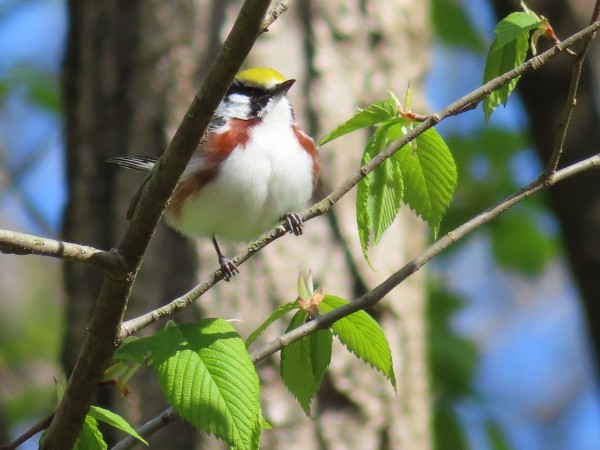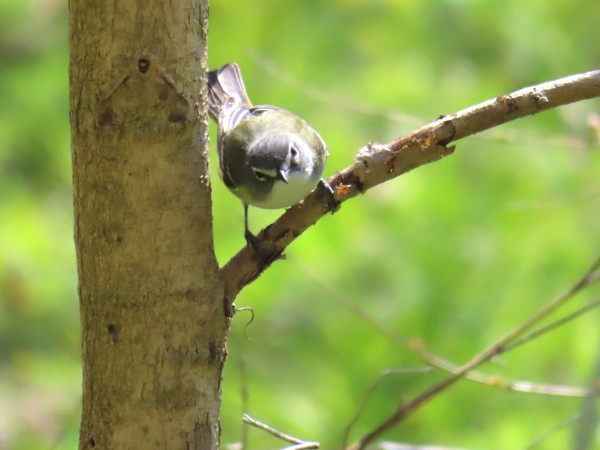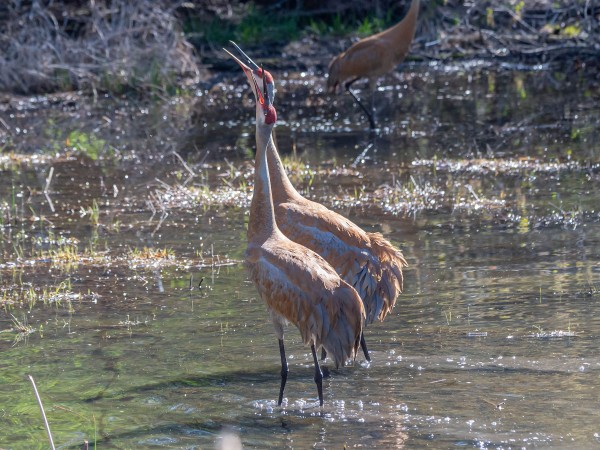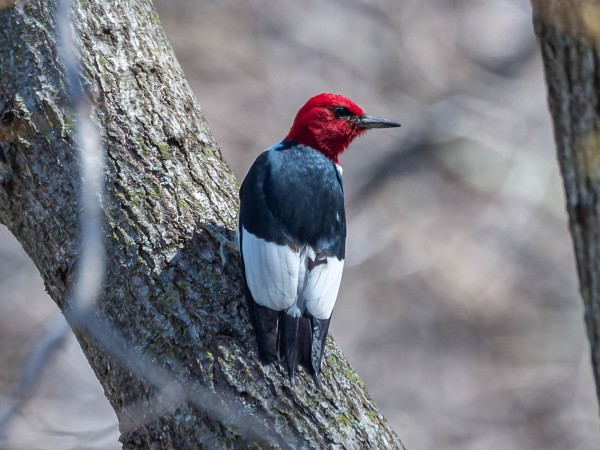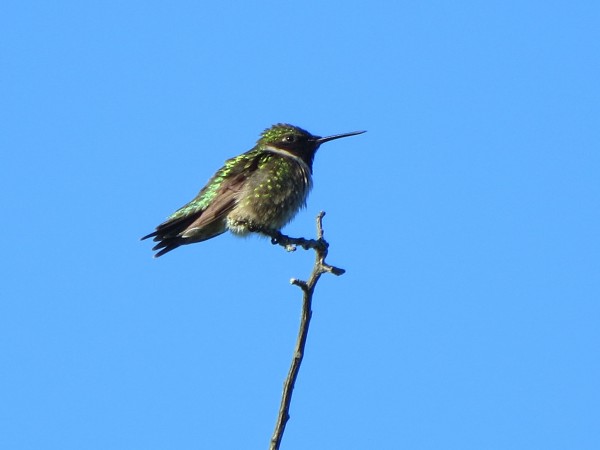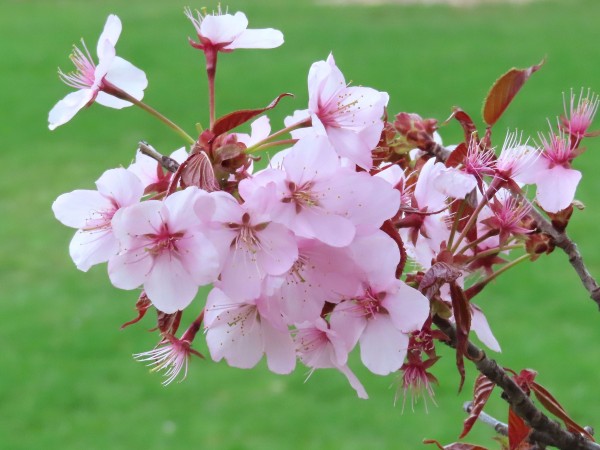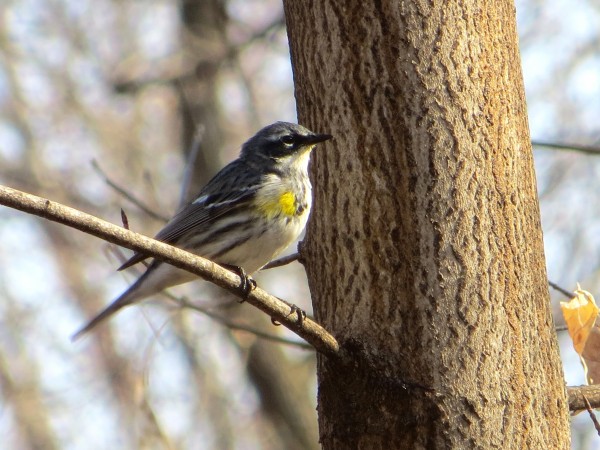Chuck's Birding Report #112
03 May - 09 May 2022
Dear fellow flock of birders,
Today was a phenomenal birding day. The wind was coming from the south which carried lots of birds to the Arb and Madison in general. This was a perfect example of finding a quiet place to bird when the wind is blowing. I was birding with Ellen Hansen and we birded the path that borders the north side of Wingra Woods. It’s the path that starts across Arb Drive from the west end of the Crabapple Collection and continues past Big Spring and goes all the way to Skunk Cabbage Bridge. That whole area had very little wind. Paul Banas birded that area too. All three of us had fantastic numbers of warbler species as well as good numbers of each warbler species. It was an ideal birding day! The same could happen tomorrow. I hope it will be just as good or better. No promises though.
We have been lucky so far that the temps have been cool so that the leaves have not really come out on the trees. This has made viewing birds much easier. However with these next few days of hot weather the leaves will really pop. For the birds, especially the insect eating birds, this hot weather should accelerate insect hatching. I did see more insects today. No mosquitoes yet but it might not be too long before they appear too. I also saw butterflies, dragonflies, bumble bees, etc. Our birds really need all of these food sources.
So what warblers did we see today? Ellen and I saw 16 species and Paul saw 17 species of warblers. First we saw Yellow-rumped Warblers. Most were in bright breeding plumage. There were a couple in very dull plumage which were probably females or young born last year. There were a couple Palm Warblers at Big Spring. The most numerous warbler at Big Spring was the Yellow Warbler, both males with rusty stripes on their breast and females without stripes. We also saw lots of American Redstarts in their black and orange plumage. Those were all males. I did see my first female American Redstart in its gray and yellow plumage. A photo of the male American Redstart is included. I thank Rosemary Jones for sharing that photo.
We did see one Ovenbird which you can most often find walking on the leaves on the ground in the woods. We did see a couple male Common Yellowthroats who, besides their yellow throat, have a very distinctive black mask. Along the path we saw several stunning Magnolia Warblers. They have black and white areas but what really stands out is a yellow breast and belly decorated by a black necklace with black stripes extending over the breast and belly. Included is a photo of a Magnolia Warbler generously contributed by Rosemary Jones.
Scattered here and there along the east/west path were two other special warbler species. First is the Chestnut-sided Warbler. It is topped with a yellow cap. There are black and white areas around the head. The most prominent feature of this warbler is a wide chestnut colored band that runs on the side of the breast and belly just below the wings. The rest of the breast and belly is white. The other warbler is the Blackburnian Warbler. We only saw females with yellow throats. The male has a super bright orange throat that I think must glow in the dark. Photos of the Chestnut-sided and Blackburnian Warbler are included.
One of our favorite warbler observations was at the small spring east of Big Spring. We stood quietly waiting for possible warblers to appear. All of sudden a Golden-winged Warbler appeared. It worked its way to the spring water and took a very splashy bath. It was a great show. Its colors are spectacular. I can’t do it justice with a description. One minute later another warbler showed up. We thought at first it was a Prothonotary Warbler. But wait, its wings had white wing bars and there was a thin black line through the eye. It was a Blue-winged Warbler. It too slowly descended to the water and took a bath. We were over the moon to be able to see both the Golden-winged and Blue-winged Warblers in close proximity. It was indeed a special moment. We saw several other warblers too.
Maybe I should say something about other birds that we saw and or heard not only today but in past days.
Another bird I saw on the path in Wingra Woods was a Blue-headed Vireo. Of the vireos I think this is the most handsome. The most distinctive feature of this vireo is the fancy spectacles it wears. It is formed by white eyerings which are connected by a white band that extends over the top of the beak to connect the eyerings to form spectacles. A photo of the Blue-headed vireo is included.
At Teal Pond there is a pair of Sandhill Cranes nesting there. Diane Dempsey discovered the nest almost a week ago while leading a young class on a nature tour. When Jeff Galligan, Matt Reetz and I were leading a bird walk last Saturday for the Birding 101 Class we were not only able to see a Sandhill Crane on the nest but also see two Sandhill Cranes fly in. This precipitated unison calling by one of the cranes that flew in and the crane on the nest. This evidently was the pair. The third crane may have been last year’s offspring. Anyway after the sitting crane stood we could see the two eggs in the nest. Next the two adults traded places. The new one at the nest rolled the eggs a bit with its beak to prevent malformation of the developing embryo inside the egg. The adult then sat down on the eggs. Both parents share the duties of incubating the eggs. A photo of the crane unison calling is included. That photo was taken by Jeff Galligan. Thank you, Jeff.
Also that same day we were able to show the class a Red-headed Woodpecker low, moving from one trunk of a tree to another. Jeff Galligan contributed a wonderful photo of the Red-headed Woodpecker. Thank you, Jeff.
The last two photos are paired together. Several days ago I saw my first Ruby-throated Hummingbird. It was nectaring on one of the Sargeant Cherry Trees in the eastern part of Longenecker Gardens. I couldn’t get a photo of that activity so you have to imagine that the hummingbird in the photo is flying around the flowers of the cherry tree removing some of its nectar while flying. Since then I have seen the Ruby-throated Hummingbird perched in two other trees in the Arb. If you haven’t already done so, it’s time to put out your hummingbird feeders.
If you want to see Barred Owlets coming out of a nest hole over at Picnic Point, check out Cynthia Carlson’s video here. The video is amazing. Thank you, Cynthia!
That’s the Arboretum bird report for the past week.
I wish all of you good health and good spring birding too,
Chuck

